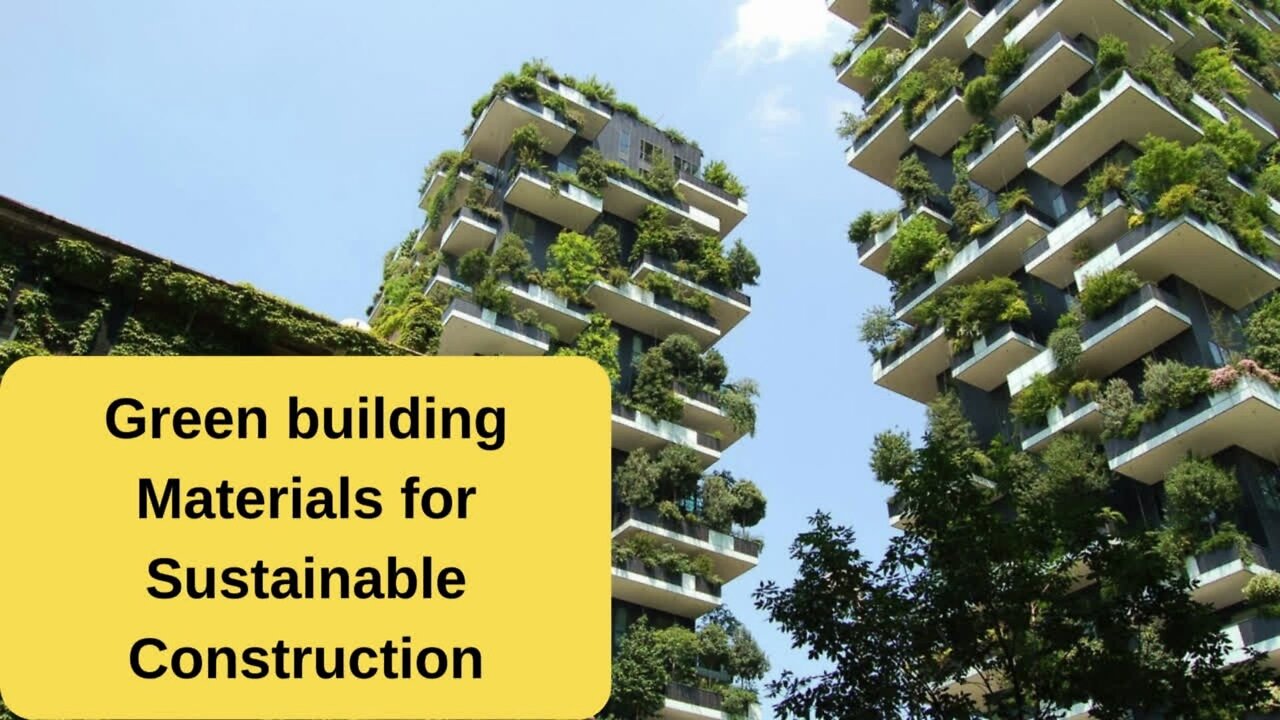Premium Only Content

Green building materials for sustainable construction
Green building materials are essential for sustainable development and reducing environmental impact. Here are some examples of sustainable building materials:
Bamboo: Due to its regeneration characteristics and versatility, bamboo is one of the most sustainable building materials. Although a herbaceous plant, bamboo has similar strength to wood but is flexible. It can be used in various applications such as supporting concrete, scaffolding, roofing and other structures. Benefits:
It grows quickly and is easy to grow.
It absorbs more CO2 than trees, contributing to cleaner air in the environment.
Recycled plastic: In 2021, the world's population produced 139 million tons of single-use plastic, most of which ended up in landfills or polluting waterways. New technologies allow plastic to be recycled to create building materials such as plastic boards, bricks and wood. Benefits:
It reduces the amount of waste that ends up in landfills and polluted areas.
It does not require the same toxic protective substances as wood.
Laminated wood: Also known as table wood, laminated wood is a prefabricated wood with greater strength and better water resistance than traditional wood. It is used in construction to create solid and durable structures.
These materials offer sustainable alternatives to traditional building products, contributing to energy efficiency and protecting the environment. 🌿
Bamboo
Recycled plastic
Laminated wood
Autoclaved cellular concrete
Recycled glass
Mineral wool insulation
FSC certified wooden floors
Green roofs
Natural stones
Energetic efficiency
Renewable materials
Concrete bricks
The dressed stone
Prefabrication
Modular construction
Low carbon emissions
Quality control
Thermal and acoustic insulation
Additives to reduce CO2 emissions
Reduced water consumption🌱
-
 49:33
49:33
Candace Show Podcast
1 hour agoI Respond To Mr. And Mr. Macron | Candace Ep 131
16.9K18 -
 LIVE
LIVE
Revenge of the Cis
3 hours agoEpisode 1429: Catch And Release
2,130 watching -
 LIVE
LIVE
Film Threat
7 hours agoVERSUS: HOLLYWOOD IS STILL ON FIRE | Film Threat Versus
178 watching -
 12:33
12:33
Silver Dragons
2 hours agoSilver Price Crushed Today - NEW TREND STARTING?
2.27K -
 1:02:03
1:02:03
In The Litter Box w/ Jewels & Catturd
20 hours agoRecall Newscum & Bass! | In the Litter Box w/ Jewels & Catturd – Ep. 718 – 1/13/2025
38.7K16 -
 3:19:58
3:19:58
Tate Speech by Andrew Tate
8 hours agoEMERGENCY MEETING EPISODE 101 - STRENGTH AND HONOR
129K53 -
 1:48:09
1:48:09
The Quartering
5 hours agoLA Fires Are About To Get Way Worse, Trump Vs Vance On J6 Pardons, Brett Cooper Bombshell & More
83.1K32 -
 LIVE
LIVE
Dr Disrespect
5 hours ago🔴LIVE - DR DISRESPECT - MARVEL RIVALS - TOP 500 IN THE WORLD
3,272 watching -
 1:05:49
1:05:49
MTNTOUGH Fitness Lab
7 hours agoDamon West: How Faith and Mental Toughness Helped Me Escape Prison | MTNPOD #99
6.49K -
 1:43:05
1:43:05
The Criminal Connection Podcast
7 hours agoIAN MCCRANOR: World Champion Karate Doorman CRAZY Life Story, Mob Hits GONE WRONG & Video Game Star!
5.58K1